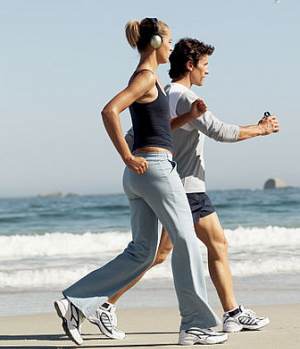Greetings
New Year Resolutions Worth Keeping
Well 2014 has hit us with a blast! I hope everyone got through the latest wild weather without too much difficulty. This kind of weather helps remind us of what it is to be Canadian.
Every year when January 1st comes around many of us take it as an opportunity to make some New Year resolutions hoping to achieve positive changes in our lives. While there is much in the media about how no one really keeps their resolutions, people who make them actually have a better chance of realizing success.
Getting fit and healthy always tops the list of year after year, however many people set goals that they don’t know how to achieve or are unrealistic.
A very common mistake when starting a new fitness program is to jump in too quickly and to go all out on the first few days. Heading to the gym filled with determination these eager clients go straight for the weights and cardio machines without a plan. After all, how hard can it be?
The problem is that while you may feel great while you are working out, by jumping in too fast you don’t give your body a chance to gradually build up your strength, endurance and flexibility.
 The pain from an overly aggressive workout may take a day or two to kick in, but at that point you can end up so sore and stiff that you can barely move.
The pain from an overly aggressive workout may take a day or two to kick in, but at that point you can end up so sore and stiff that you can barely move.
For many people this can be the end of the “fitness experiment”. Concluding that exercise just isn’t for them, they give up and go back to their sedentary lifestyle.
Getting fit is a gradual process, and those who start out easy and increase their workouts slowly over time are more likely to be successful.
Let’s start with the basics. Getting into a regular walking program is the easiest way of starting off if you haven’t been exercising in a while.
Walking just 30 minutes a day gives you the following benefits:
- Achieve or maintain a healthy weigh
- Improved sleep
- Improved heart strength
- Decreased risk of type 2 diabetes
- Helps prevent dementia
- Helps prevent osteoporosis
- Decreased stress
- Gives you energy
 Walking for fitness means walking at a sufficient speed to bring your heart rate into your training zone, around 60% of your maximum heart rate. A really simple way to figure out this number is by the following calculation: (220 – age) x 60.
Walking for fitness means walking at a sufficient speed to bring your heart rate into your training zone, around 60% of your maximum heart rate. A really simple way to figure out this number is by the following calculation: (220 – age) x 60.
This gives you a general idea of your target heart rate. Now take your pulse for 10 seconds and times that by 6. That gives you your heart rate. You can also use perceived effort. At a moderate pace you should be able to talk but not sing.
While minus 40 degree temperatures and ice covered sidewalks are not an enticement to go outside in winter, you can still walk indoors on a treadmill or at a mall. When the weather does improve consider getting some winter gear and heading out. Just getting some fresh air and sunshine can do a lot to banish the mid-winter blahs.
Make sure you have good footwear. A good pair of walking shoes properly fitted to your feet will go a long way towards your success. Those old tennis shoes in the back of the closet won’t do it.
Keep in mind to take some basic safety precautions, walk with a friend or stay in well-lit areas if you are walking in the dark. Keep some identification on you and change your route regularly.
Sticking to a schedule and making the walk a priority is important. Try to find a time every day that works best for you. It takes about 7 times to make something a habit, so get started on this healthy habit.